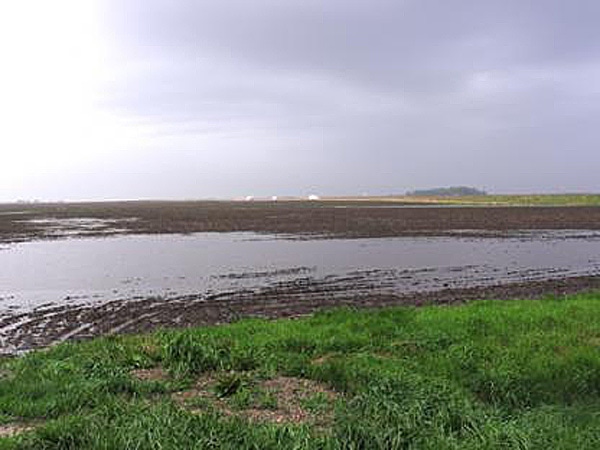March 4, 2013

The area of Minnesota's landscape in severe to extreme drought diminished during February, dropping from 84% of the state's landscape to under 70%. This modest improvement was mostly due to above-normal snowfall, especially across central and northern counties.
The new climate outlooks from the National Oceanic and Atmospheric Administration (NOAA) Climate Prediction Center suggest that, for much of March, the Great Lakes region will see above-normal precipitation. This is welcome news in the context of improving our drought situation, especially if we can lose the soil frost as well so the ground is more receptive to moisture recharge. In some areas, frost depth ranges from 20 to 40 in.; this will take some time to thaw out.
One potential risk of a wetter-than-normal March is the threat of flooding from snow melt. Last week, the National Weather Service updated the spring flood outlook for major Minnesota rivers. This new outlook calls for a near-normal risk of spring snow melt flooding on portions of the Upper Minnesota River, as well as the Upper Mississippi River. This is mostly due to more abundant snowfalls during February, along with deeper ground frost, which combined to elevate the risk of spring flooding from a below-normal level to a near-normal level. You can read more about the spring flooding outlook and keep up to date here: http://1.usa.gov/VZTAQn
Spring flood outlook probabilities for the Red River are also available from the Grand Forks NWS Office. These show a relatively higher risk of flooding on the lower end of the Red River Valley between Wapehton and Fargo, N.D. You can get more detail at: http://1.usa.gov/YPUb69
The higher risk of flooding along the Red River is because the abundant snow cover already contains 2 to 5 in. of liquid water trapped on top of frozen ground there. A rapid thaw could cause a great volume of runoff before the soils are capable of absorbing the moisture. If this situation develops and is further compounded by heavy March rainfalls, then indeed this area of the state could see some moderate to major flooding. Thus state and federal agencies will monitor the gauged flow volumes on the rivers, as well as the weather very carefully during the month of March.
Visit www.extension.umn.edu/extreme-weather for related educational information on drought and winter impacts. Visit climate.umn.edu for more information from the University of Minnesota's climatology working group.
You May Also Like




